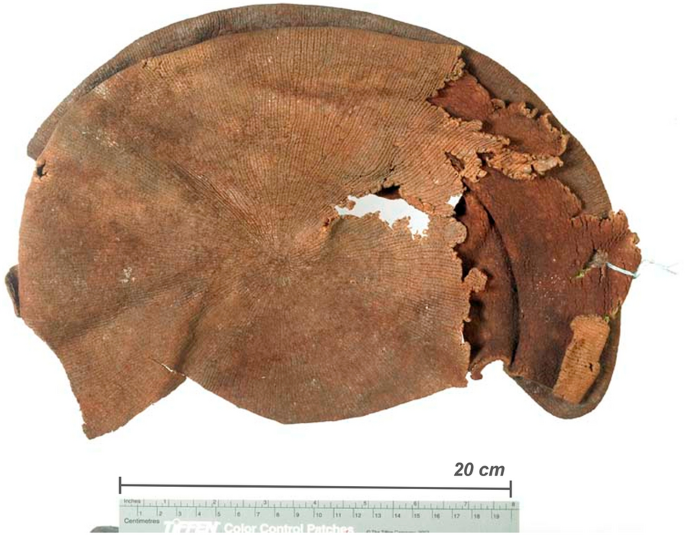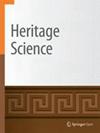Early modern knitted caps (fifteenth to sixteenth centuries): analyzing dyes in archaeological samples using microspectrofluorimetry complemented by HPLC–MS
IF 2.6
1区 艺术学
Q2 CHEMISTRY, ANALYTICAL
引用次数: 0
Abstract
Abstract The knitted cap was the ubiquitous and most visible garment men wore throughout early modern society, from apprentices to royals. Documentary evidence also suggests that red was a conventional color for specific garments in the sixteenth century, including knitted caps. However, most knitted caps in museum collections are now a muddy brown characteristic of archaeological textiles, and their original color has seldom been studied. Considering the potential of microspectrofluorimetry for analyzing dyes in ancient textiles and manuscript illuminations, this technique was tested on six caps dating from the fifteenth to sixteenth centuries examined in the Knitting in Early Modern Europe research project. The colors are in good preservation condition in two samples, whereas the others show extensive degradation. The emission and excitation spectra acquired allowed the identification of the similarities and differences between samples, grouping them into different dye sources such as cochineal-based and madder-based (RED1 and RED2, respectively). For the coif cap and split-brimmed cap in good condition, analysis through HPLC–MS confirmed the sources of the dyes as Rubia tinctorum and cochineal. It also disclosed the source for another coif cap as Kermes vermilio (RED4). The other knitted items are possibly madder-based (RED3), but HPLC–MS did not allow confirmation of the madder source. The continuing development of a database of excitation and emission spectra acquired from historical textiles, such as the knitted caps, will support the identification of dye sources and specific formulations. Although this technique demands a comprehensive database of references for comparison with the complex signals identified, it allows for rapid spectra acquisition, providing tremendously valuable information.

早期现代针织帽(15至16世纪):利用显微荧光法和高效液相色谱-质谱法分析考古样品中的染料
从学徒到皇室成员,针织帽是早期现代社会中随处可见的男性服饰。文献证据还表明,在16世纪,红色是特定服装的传统颜色,包括针织帽。然而,博物馆收藏的大多数针织帽现在都是考古纺织品特征的泥棕色,它们的原始颜色很少被研究。考虑到显微荧光法在分析古代纺织品和手稿照明中的染料方面的潜力,这项技术在早期现代欧洲针织研究项目中对六顶可追溯到15至16世纪的帽子进行了测试。两个样品的颜色保存良好,而其他样品的颜色则明显退化。获得的发射和激发光谱可以识别样品之间的相似性和差异性,并将它们归类为不同的染料来源,如胭脂红基和红木基(分别为RED1和RED2)。对保存完好的帽檐和开檐帽,经HPLC-MS分析,确定染料来源为胭脂红和胭脂虫。该公司还披露了另一款coif帽的来源为Kermes vermilio (RED4)。其他针织项目可能是茜草为基础(RED3),但HPLC-MS不允许确认茜草的来源。继续发展从历史纺织品(如针织帽)获得的激发和发射光谱数据库,将有助于确定染料来源和具体配方。虽然这项技术需要一个全面的参考数据库来与识别的复杂信号进行比较,但它允许快速获取光谱,提供非常有价值的信息。
本文章由计算机程序翻译,如有差异,请以英文原文为准。
求助全文
约1分钟内获得全文
求助全文
来源期刊

Heritage Science
Arts and Humanities-Conservation
CiteScore
4.00
自引率
20.00%
发文量
183
审稿时长
19 weeks
期刊介绍:
Heritage Science is an open access journal publishing original peer-reviewed research covering:
Understanding of the manufacturing processes, provenances, and environmental contexts of material types, objects, and buildings, of cultural significance including their historical significance.
Understanding and prediction of physico-chemical and biological degradation processes of cultural artefacts, including climate change, and predictive heritage studies.
Development and application of analytical and imaging methods or equipments for non-invasive, non-destructive or portable analysis of artwork and objects of cultural significance to identify component materials, degradation products and deterioration markers.
Development and application of invasive and destructive methods for understanding the provenance of objects of cultural significance.
Development and critical assessment of treatment materials and methods for artwork and objects of cultural significance.
Development and application of statistical methods and algorithms for data analysis to further understanding of culturally significant objects.
Publication of reference and corpus datasets as supplementary information to the statistical and analytical studies above.
Description of novel technologies that can assist in the understanding of cultural heritage.
 求助内容:
求助内容: 应助结果提醒方式:
应助结果提醒方式:


